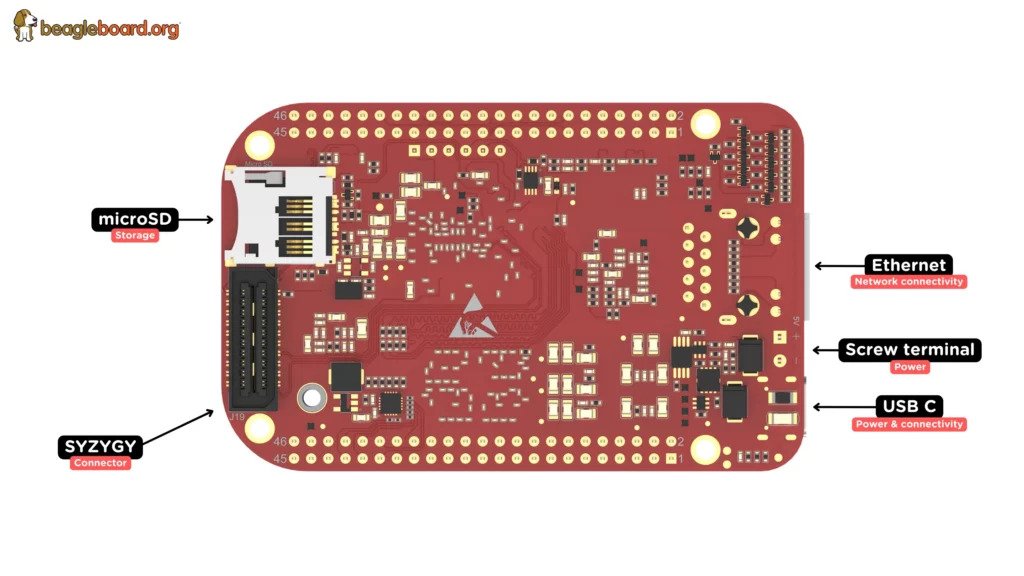BeagleBoard Announces BeagleV-Fire With RISC-V and FPGA
RISC-V and FPGA in one package

Think single board computers, and you think of Raspberry Pi right? Well raspberries are not the only fruit. "Hot" on the heels of its recent BeagleV-Ahead board, BeagleBoard has announced the $150 BeagleV-Fire. The board brings RISC-V and an FPGA into the familiar BeagleBoard form factor.


The BeagleV-Fire is an open-source board designed to empower embedded hardware developers. The five-core RISC-V CPU may not be as powerful as the Arm chips found in the Raspberry Pi 5, but it doesn't have to be as it targets a different group of users. Beagle boards have used Arm-based CPUs in the past, but the switch to an open-source RISC-V CPU is the only significant change between the boards. The inclusion of an FPGA is an interesting option. In the right hands, an FPGA can be programmed to become many different chips, some of which are no longer made.
“We aren’t just interested in openness at the board level, or even at the instruction-set level; we want to pave paths for everyone interested in what digital technology can enable in sensing and controlling the world around them and BeagleV-Fire marks significant progress down that path,” said Jason Kridner, Co-Founder of BeagleBoard.org. “By harnessing the power of Microchip’s PolarFire FPGA SoC IC and embracing the RISC-V architecture, we are unleashing the potential for ground-breaking innovation within the open-source community.”
| SoC | Microchip PolarFire MPFS025T FCVG484E |
| CPU | 5 core RISC-V CPU up to 667 MHz |
| Row 2 - Cell 0 | 1x 64-bit RV64IMAC monitor/boot core (E51) |
| Row 3 - Cell 0 | 4x 64-bit RV64GC Application cores (U54-MC) |
| FPGA | FPGA Fabric with 23K logic elements, 68 math blocks and four SerDes lanes |
| RAM | 2GB LPDDR4 |
| Storage | 16GB Kingston eMMC 5.1, Micro SD |
| Networking | Gigabit Ethernet, M.2 E-Key |
| Ports | USB-C (480 Mbps) |
| Row 9 - Cell 0 | CSI 22-pin camera connector |
| Row 10 - Cell 0 | SYZYGY high-speed connector |
| Row 11 - Cell 0 | JTAG header |
| GPIO | 2 x 46-pin BeagleBone Cape |
| Power | USB-C or via Screw Terminal |
BeagleV-Fire, just like the BeagleV-Ahead, uses the cape form factor, similar to Raspberry Pi's HATs and Arduino's Shields. Compatible capes can be placed on top of the board and used to power projects such as robotics and data collection. The GPIO can also be used with breadboard and external circuits. The P8 and P9 headers provide standard digital IO pins, PWM, and analog. They also provide I2C, SPI, UART interfaces.
The OS of choice for BeagleBoard's is Linux, and while there are no software images available for direct download at this time, we did spot an entry in a Git repository that shows Ubuntu support is being worked on. We speculate that it will use the same OS choices as the BeagleV-Ahead, namely Ubuntu and Yocto Linux.
The BeagleBoard team has a documentation page up; from there, we can delve deeper into the BeagleV-Fire. The board is fresh from the reflow ovens, so documentation will take a little time to catch up.
You may have noticed the lack of HDMI, VGA of DisplayPort on the BeagleV-Fire. To work on the board, you'll need to plug it into a computer and then remotely access it. From there you can access the OS and write code for your project, or flash a new OS to the onboard 16GB eMMC.
Get Tom's Hardware's best news and in-depth reviews, straight to your inbox.
The BeagleV-Fire is available from several distributors, starting from $150.

Les Pounder is an associate editor at Tom's Hardware. He is a creative technologist and for seven years has created projects to educate and inspire minds both young and old. He has worked with the Raspberry Pi Foundation to write and deliver their teacher training program "Picademy".